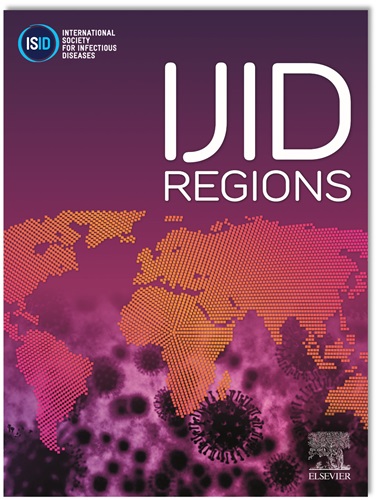Point-of-care testing reduces antibiotic prescribing in acute exacerbations of chronic obstructive pulmonary disease: A systematic review and meta-analysis
IF 4.8
2区 医学
Q1 INFECTIOUS DISEASES
引用次数: 0
Abstract
Background
Challenges in identifying the causes of acute exacerbations of chronic obstructive pulmonary disease (AECOPD) have led to overuse of antibiotics. The advantages of point-of-care testing (POCT) may help to identify pathogens and use antibiotics more appropriately.
Methods
We conducted a systematic review to evaluate the effect of POCT to guide antibiotic prescriptions for AECOPD. Adhering to a protocol (CRD42024555847), we searched eligible studies. The outcomes included antibiotic-related and clinical outcomes. We evaluated the risk of bias and performed meta-analyses with subgroup based on the type and testing timing of POCT.
Results
A total of 18 studies evaluating 4346 AECOPD patients were included. Overall, POCT significantly reduced the number of AECOPD patients given antibiotic prescriptions by 16% (P < 0.001). Additionally, antibiotic treatment was reduced by 1.19 days (P = 0.04). There was no detrimental impact on clinical outcomes, such as the length of hospital stay (P = 0.19). Our results proved robust to sensitivity analyses.
Conclusion
We offered reasonable evidence for using POCT to reduce antibiotic exposure for AECOPD without adversely affecting clinical outcomes. As diagnostic techniques become increasingly important in combating antimicrobial resistance, the use of POCT should be encouraged.

即时检测减少慢性阻塞性肺疾病急性加重的抗生素处方:一项系统回顾和荟萃分析
背景:在确定慢性阻塞性肺疾病(AECOPD)急性加重原因方面的挑战导致了抗生素的过度使用。即时检测(POCT)的优势可能有助于识别病原体和更适当地使用抗生素。方法:通过系统评价POCT对AECOPD抗生素处方的指导作用。根据方案(CRD42024555847),我们检索了符合条件的研究。结果包括抗生素相关结果和临床结果。我们评估了偏倚风险,并根据POCT的类型和测试时间对亚组进行了荟萃分析。结果:共纳入18项研究,评估4,346例AECOPD患者。总体而言,POCT显著减少了接受抗生素处方的AECOPD患者数量16% (p < 0.001)。此外,抗生素治疗减少了1.19天(p = 0.04)。对临床结果没有不利影响,如住院时间(p = 0.19)。我们的结果对敏感性分析证明是稳健的。结论:我们提供了合理的证据,证明使用POCT可以减少AECOPD的抗生素暴露,而不会对临床结果产生不利影响。随着诊断技术在对抗抗菌素耐药性方面变得越来越重要,应鼓励使用POCT。
本文章由计算机程序翻译,如有差异,请以英文原文为准。
求助全文
约1分钟内获得全文
求助全文
来源期刊
CiteScore
18.90
自引率
2.40%
发文量
1020
审稿时长
30 days
期刊介绍:
International Journal of Infectious Diseases (IJID)
Publisher: International Society for Infectious Diseases
Publication Frequency: Monthly
Type: Peer-reviewed, Open Access
Scope:
Publishes original clinical and laboratory-based research.
Reports clinical trials, reviews, and some case reports.
Focuses on epidemiology, clinical diagnosis, treatment, and control of infectious diseases.
Emphasizes diseases common in under-resourced countries.

 求助内容:
求助内容: 应助结果提醒方式:
应助结果提醒方式:


